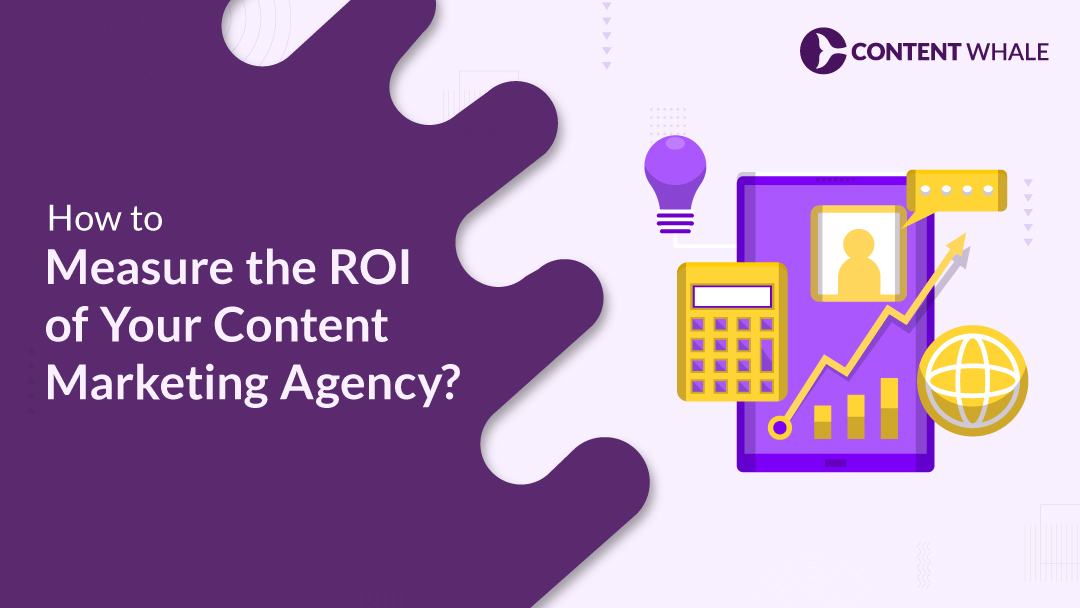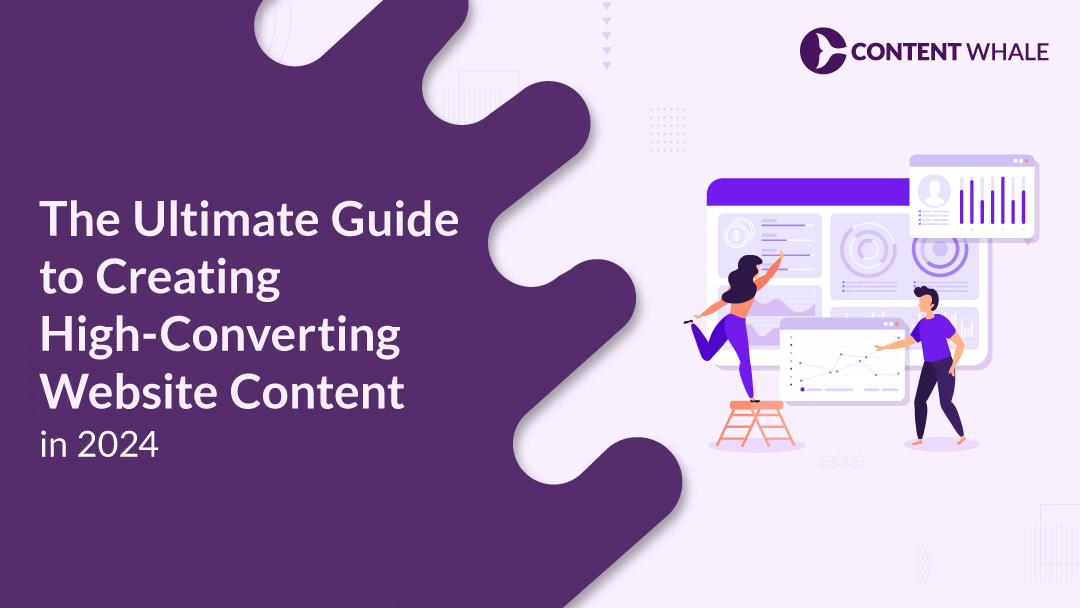Quick Summary
Understanding content marketing ROI is essential for evaluating the effectiveness of your content strategies. Key metrics and KPIs such as website traffic, engagement, and conversion rates help track performance. Effective tools like Google Analytics, HubSpot, and SEMrush are crucial for accurate measurement. Real-world case studies from companies like HubSpot and Moz highlight successful strategies. Content Whale can enhance your B2B content marketing ROI through targeted content and data-driven insights.
Understanding content marketing ROI is essential for any business investing in content strategies. Measuring this return helps in knowing what works and what doesn’t.
Yet, calculating content ROI can be tricky. The main challenge is attributing direct returns to specific content efforts. Long sales cycles and multiple touchpoints add to the complexity.
Accurately measuring B2B content marketing ROI is even more complicated. B2B sales processes involve various stakeholders and longer decision times. Despite these challenges, knowing the ROI of your content marketing is vital. It ensures that your investments are paying off and helps in optimizing future strategies.
In this blog, we will explore the importance of content marketing ROI. We’ll look into the challenges, key metrics, and effective measurement tools.
We’ll also share strategies to improve your inbound marketing ROI and real-world examples of successful content marketing. Lastly, we’ll show how Content Whale can boost your content marketing efforts.
Why Measuring ROI for Content Marketing Agencies is Crucial

1. Understanding Content Marketing ROI
Measuring content marketing ROI is essential for both agencies and clients. It shows how effective your content strategy is. ROI measures the profitability of your marketing efforts. This helps agencies justify budgets and refine strategies.
2. Benefits for Agencies and Clients
Understanding content ROI ensures that clients’ investments are yielding the desired outcomes. It brings accountability and transparency to the marketing process, and tracking ROI also helps clients make informed decisions.
3. Challenges in Measuring B2B Content Marketing ROI
Long sales cycles and multiple touchpoints make measuring B2B content marketing ROI challenging. These factors make it hard to attribute conversions to specific content pieces. However, accurate measurement is necessary. It helps optimize content strategies and resource allocation.
4. Importance of Tracking Inbound Marketing ROI
Tracking inbound marketing ROI can benefit decision-making and enhance accountability. You can showcase tangible results to stakeholders, which builds trust and justifies further investment in content marketing.
5. Overcoming Common Challenges
Agencies face common challenges like data silos and tracking multiple channels. Overcoming these requires integrated analytics tools and consistent tracking methods. Accurate measurement allows for continuous improvement.
Measuring content marketing ROI is crucial for demonstrating value. It helps in refining strategies, justifying budgets, and ensuring effective resource use. Understanding and overcoming the challenges in measuring ROI will lead to better marketing outcomes for both agencies and clients.
Key Metrics and KPIs for Content Marketing ROI

1. Essential Metrics for Measuring ROI
To measure content marketing ROI effectively, track metrics like website traffic, user engagement, and conversion rates. Website traffic indicates how well your content attracts an audience. Tools like Google Analytics can help you monitor traffic sources and visitor behavior.
2. Important KPIs to Monitor
Key performance indicators (KPIs) like Cost Per Lead (CPL), Cost Per Acquisition (CPA), and Customer Lifetime Value (CLTV) are vital. CPL and CPA measure cost-effectiveness, while CLTV assesses long-term value from customers acquired through content marketing.
3. Choosing the Right Metrics and KPIs
Selecting the right metrics and KPIs depends on your goals. For lead generation, focus on CPL and conversion rates. For brand awareness, prioritize website traffic and social media engagement. Tools like HubSpot can help track these KPIs effectively.
4. Understanding User Engagement
Engagement metrics, such as time on site and bounce rate, provide insights into how visitors interact with your content. High engagement usually correlates with higher content ROI.
Social media metrics like likes, shares, and comments also indicate engagement levels.
5. Tracking Conversion Rates
Conversion rates measure how effectively your content turns visitors into leads or customers. This is a direct indicator of inbound marketing ROI. Track conversions using tools like Google Analytics and CRM systems to get a clear picture of your content’s impact.
6. Measuring B2B Content Marketing ROI
For B2B content marketing ROI, track metrics like lead quality and sales cycle length. These help understand the effectiveness of content in the B2B sales process. Tools like SEMrush and HubSpot can help you track these metrics accurately.
7. Utilizing Analytics Tools
Gather data on these metrics and KPIs using tools like Google Analytics, HubSpot, and SEMrush. Analyze this data regularly to measure and improve content marketing ROI. These tools offer insights into user behavior, campaign performance, and overall ROI.
Focusing on these metrics and KPIs can help you gain a comprehensive understanding of your content ROI. This helps you refine strategies and achieve better marketing outcomes.
Tools and Techniques for Measuring Content Marketing ROI

1. Popular Analytics Tools
Several analytics tools help measure content marketing ROI. Google Analytics tracks website traffic, user behavior, and conversion rates. It provides insights into how visitors interact with your content and where they come from.
HubSpot offers comprehensive marketing analytics, including lead tracking, campaign performance, and ROI measurement.
SEMrush is valuable for analyzing content performance, keyword tracking, backlink analysis, and competitive intelligence.
2. Setting Up and Tracking Campaigns
To set up and track campaigns using these tools, start by defining clear objectives and key performance indicators (KPIs). Use UTM parameters to track the performance of specific campaigns and content pieces.
Regularly analyze data to identify trends, measure progress, and make informed decisions.
Google Analytics helps in setting up goals and tracking conversions, while HubSpot provides detailed reports on lead behavior and sales attribution.
3. Analyzing Data for ROI
Techniques for analyzing and interpreting data include cohort analysis and multi-touch attribution. Cohort analysis tracks the behavior of specific user groups over time, providing insights into long-term engagement and retention.
Multi-touch attribution assigns value to each touchpoint in the customer journey, helping to understand which content pieces contribute most to conversions.
4. Using Dashboards for Real-Time Insights
Creating dashboards with tools like Databox can simplify tracking. These dashboards aggregate data from multiple sources, providing a real-time view of key metrics. This helps in identifying performance gaps and opportunities for improvement.
You can customize dashboards to focus on metrics that matter most to your content ROI.
5. Leveraging SEO Tools
SEO tools like SEMrush and Ahrefs track keyword rankings, backlinks, and overall site performance.
Monitoring keyword rankings helps in optimizing content for search engines, driving organic traffic, and improving inbound marketing ROI.
Backlink analysis identifies high-quality links that boost your site’s authority and search rankings.
6. Social Media Analytics
Social media platforms like Facebook, Instagram, and LinkedIn have built-in analytics tools. These tools provide insights into reach, engagement, and audience demographics.
Monitoring social media metrics helps in understanding which content resonates with your audience and drives traffic to your site. This data is crucial for improving your content marketing ROI through targeted social media strategies.
7. Conversion Tracking
Conversion tracking is essential for measuring the effectiveness of your content. Tools like Google Analytics and HubSpot allow you to set up and track conversions, providing insights into which content pieces drive leads and sales.
Tracking conversions helps in identifying high-performing content and replicating its success.
8. Integrating CRM Systems
Integrating CRM systems like Salesforce with your analytics tools provides a holistic view of your marketing efforts. This integration helps in tracking lead behavior from initial contact to final sale, offering insights into the customer journey and overall B2B content marketing ROI.
It also aids in refining your content strategy based on customer interactions and feedback.
By utilizing these tools and techniques, you can effectively measure and improve your content marketing ROI. Consistent tracking and analysis help in optimizing content strategies and achieving better marketing outcomes.
Effective Strategies for Improving Content Marketing ROI

1. Importance of High-Quality, Targeted Content
Creating high-quality, targeted content is vital for improving content marketing ROI. Understand your audience’s needs and preferences to produce content that adds value and addresses their pain points.
Use buyer personas to guide content creation, ensuring relevance and engagement.
2. Role of SEO in Boosting ROI
SEO plays a crucial role in boosting inbound marketing ROI. Optimize your content for relevant keywords, improve site speed, and ensure mobile-friendliness. These factors enhance search engine rankings and attract organic traffic.
Regularly update and audit your content to keep it relevant and effective.
3. Leveraging Social Media
Social media can significantly amplify your content’s reach and engagement. Share your content on platforms like LinkedIn, Twitter, and Facebook. Use social media analytics to understand which posts resonate with your audience and refine your strategy accordingly.
Engaging with your audience on social media also builds trust and brand loyalty.
4. Optimizing Content Performance
Analyze content performance regularly to identify top-performing pieces. Use this data to replicate successful strategies. Experiment with different content formats, such as videos, infographics, and podcasts, to diversify your strategy and reach a broader audience.
Continuously optimize content based on performance metrics to enhance B2B content marketing ROI.
5. Incorporating Data-Driven Insights
Utilize data-driven insights to make informed decisions. Tools like Google Analytics and HubSpot provide valuable data on user behavior and content performance. Use these insights to refine your content strategy and improve content ROI.
Monitor key metrics like conversion rates, engagement, and traffic to measure the effectiveness of your efforts.
6. Enhancing User Experience
A positive user experience is essential for retaining visitors and improving content marketing ROI. Ensure your website is easy to navigate, loads quickly, and is mobile-friendly. High-quality visuals, clear calls-to-action, and engaging content contribute to a better user experience, leading to higher engagement and conversions.
By implementing these strategies, you can significantly improve your content marketing ROI and achieve better results from your content marketing efforts.
Real-World Examples of Successful Content Marketing ROI

1. Case Studies of High ROI
HubSpot’s inbound marketing strategy consistently delivers high content marketing ROI. By creating valuable blog posts, eBooks, and webinars, they generate a significant number of qualified leads. Their focus on educational content and SEO has established them as industry leaders, driving substantial organic traffic.
Another example is Moz, known for its SEO software and resources. Moz’s blog and YouTube channel provide high-quality, informative content that attracts a large audience. Their commitment to delivering value has resulted in high engagement and increased conversions, showcasing a strong inbound marketing ROI.
2. Additional Case Studies
College Raptor
Optimist helped College Raptor achieve 100,000 organic sessions per month by creating engaging infographics and leveraging media placements. This strategy significantly boosted their website traffic and search rankings.
American Kennel Club
Using a targeted content strategy, Contently increased the American Kennel Club’s website traffic by 30%, resulting in $26.6 million in content value.
alwaysAI
Beacons Point executed a content campaign that resulted in 3,532 new beta users and a 2,021% increase in traffic over 10 months.
Fieldwire
By focusing on SEO and content optimization, Fieldwire achieved top-three rankings for their main keywords and significantly increased their website traffic.
3. Lessons Learned
These companies demonstrate the importance of understanding your audience and delivering targeted, high-quality content. Key strategies include regularly updating content and optimizing for SEO.
Additionally, using data-driven insights to refine content strategies can significantly improve B2B content marketing ROI.
4. Applying These Strategies
Analyze successful companies to understand what drives their content ROI. Implement similar strategies, focusing on quality, relevance, and continuous optimization.
These examples highlight how effective content marketing can lead to substantial returns and sustained growth.
By learning from these real-world examples, you can enhance your content marketing ROI and achieve better results in your own efforts.

Understanding and measuring content marketing ROI is essential for optimizing your strategies and demonstrating value. Tracking key metrics and KPIs, using effective tools and techniques, and implementing strategies to improve performance can ensure your content marketing investments yield significant returns.
High-quality, targeted content plays a crucial role in improving content ROI. SEO and social media strategies further boost inbound marketing ROI.
Real-world examples from successful companies provide valuable insights and practical strategies. By analyzing and applying these lessons, you can enhance your own B2B content marketing ROI and achieve better results.
Content Whale specializes in creating high-quality, targeted content that drives results. Our expertise in content marketing can help you achieve your goals and maximize your ROI. Contact us today to learn more about our services and how we can assist you in your content marketing journey.
Maximize your content marketing ROI with our tailored strategies and expert guidance. Let us help you turn your content marketing efforts into measurable success.
Measuring your ROI is a continuous process. To stay ahead, regularly update your strategies based on data-driven insights. This approach ensures that your content marketing efforts remain effective and yield the highest possible returns.
FAQ
What is ROI in content marketing, and why is it important?
Content marketing ROI measures the profitability of your content efforts relative to the costs. It is important because it helps determine the effectiveness of your strategies and justifies marketing investments.
How can I measure the ROI of my content marketing agency?
Measure content ROI by tracking key metrics and KPIs such as website traffic, engagement, conversion rates, CPL, CPA, and CLTV.
Use analytics tools like Google Analytics and HubSpot to collect and analyze data.
What are the most important metrics and KPIs for content marketing analytics?
Important metrics include website traffic, engagement, and conversion rates. Key KPIs are CPL, CPA, and CLTV, which help assess the cost-effectiveness and long-term value of your marketing efforts.
What tools can help in tracking content marketing performance?
Tools like Google Analytics, HubSpot, and SEMrush can help track performance. They provide insights into user behavior, campaign effectiveness, and overall content marketing ROI.
How can Content Whale help improve my content marketing ROI?
Content Whale offers expertise in creating high-quality, targeted content that resonates with your audience. Our strategies focus on optimizing content performance and driving significant ROI for your business.
Let us help you achieve your B2B content marketing ROI goals.





